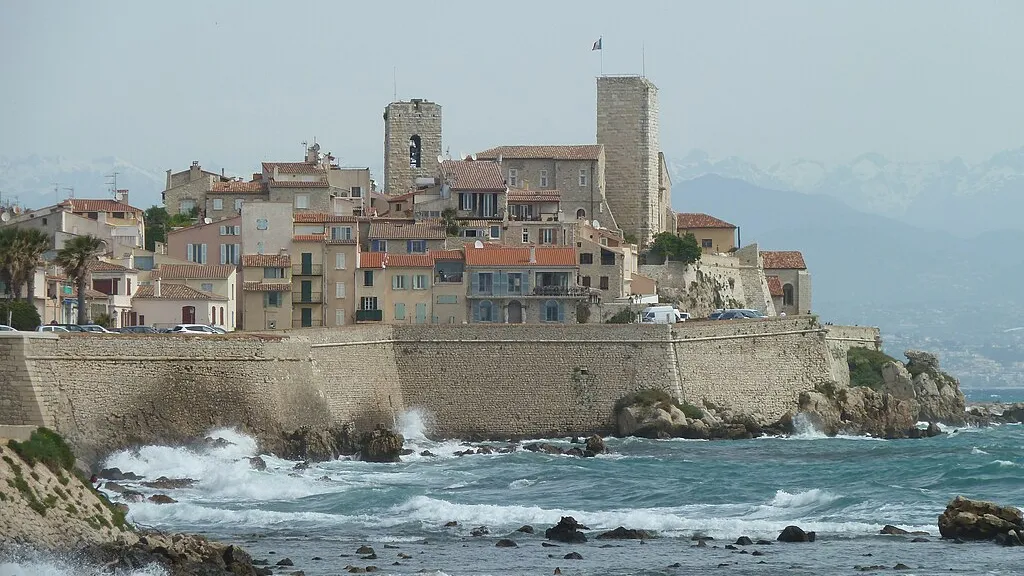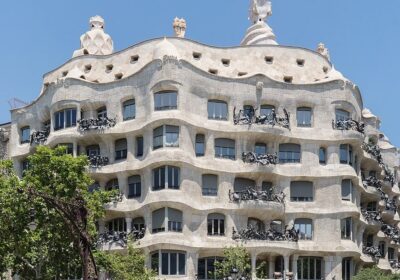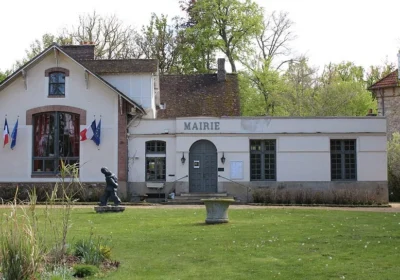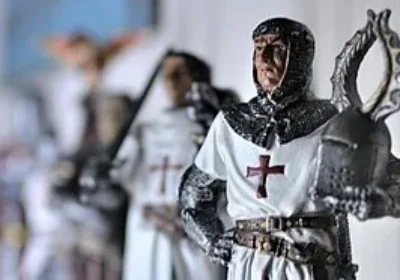ANTIBE.
The ancient town of Antibes, halfway between Nice and Cannes, is one of the most beautiful and “characteristic” towns on the southern coast of France. It was founded by the ancient Greeks in the 4th century B.C. and was called Antipolis (the city opposite). In the Middle Ages, the city became, by decision of the Roman Pope, an episcopal residence. From this point on, the city’s influence began to grow.
In the middle of the 8th century, Saracen attacks practically destroyed Antibes. Then came the plague and the city became completely extinct. The bishopric moved to Grasse and the place remained unknown for two centuries. It was only in the XIV century, on the border between France and the Principality of Savoy, that Antibes became important. It is the only walled city on the Côte d’Azur that has preserved its heritage and original appearance. Antibes has been praised many times, in verse and prose, and in all languages. The poet Frédéric Mistral wrote about its fig trees. Other poets have praised its roses. The local rose Sonia still reigns in the flower market today. In the old part of the town is the Grimaldi family castle (1385). Nowadays the second floor of the building houses the Picasso Museum. From July to December 1946, the great artist worked here, having set up an atelier in the medieval walls. When he left Antibes, he gave the museum a true treasure: 25 monumental canvases, drawings, sketches and 150 ceramic pieces created in the nearby village of Vallauris.
CAPE ANTIBES.
The very center of the Riviera is Cape Antibes. It is home to a large number of private villas and estates. There have been many people here! In the old days, near the Garup lighthouse, the Murphy couple built a villa, the castle was rented by the composer Col Porter, and near the lighthouse worked on their books Scott Fitzgerald and Ernest Hemingway.On the boulevard of Cape Antibes at the villa “Tenar” was placed in the 20’s a large Russian family. Here under the surname Borisovs hid great Russian princes with their wives and children. Nikolai Nikolaevich Romanov was considered the head of the family clan. Grandson of Emperor Nicholas I, the Grand Duke was commander-in-chief of the Russian army in 1914-1915. At Cape Antibes he lived with his sibling Pyotr Nikolayevich. Their spouses – Anastasia Nikolaevna and Milica Nikolaevna were the daughters of King Nicholas of Montenegro.Here, in this small villa, on January 5, 1929, and died Grand Duke Nicholas Nikolaevich of Russia. His coffin was covered with the St. Andrew’s flag. Bunin’s wife, Vera Nikolaevna, has memories of this sad Christmas, when the funeral service was held: “There was a feeling that bury the former Russia. Yes, here you live, as if even all healed, but almost bump into something, so it turns out that the wound is exposed, and it hurts, very painful”.Walking Cape Antibes, you will find the famous hotel “Eden Rock” or as it is called “Hotel du Cap”. It’s another superbogeyma’s haven. In Fitzgerald’s novel “Tender Night” there is a description of this hotel. “On the Cape of Antibes, a long spit between the two seas, in the most marvelous garden, where grow the best flowers of Europe, we see again villas, and at the very end of it – “Eden Rock”, charming and bizarre building, which go to see from Nice and Cannes. Such is the description of the place by Maupassant, who lived at Cape Antibes in 1885…..
GRASS.
Grasse is the world capital of perfumery, the city of flowers, where exquisite smells are born. It is believed that the name of the city comes from the “fat” local land, on which flowers bloom so readily.For every Russian – Grasse is primarily associated with the name of Nobel Prize winner Ivan Bunin. At first the writer lived in Paris. But in the summer, out of habit, he suffered a lot in the city. On the advice of Parisian jeweler Rosenthal, Bunin goes to Grasse and settled in the villa “Belvedere”. Narrow streets, small charming squares with ancient churches, clear air, and at night a huge starry sky … From the hill where the villa is located – a view of the distant mountain range of Esterel. For the writer it was a holiday…Only in Grasse there is a square of Grasses and a street of May Rose. Once upon a time, here, amidst plantations of roses and jasmine, lavender fields and citrus groves, the genius Coco Chanel thought up the composition of her first perfume Chanel No. 5. And long before her, in the time of Catherine de Medici, Grasse went down in history as a center of production of fragrant gloves. They were scented with exotic spices, musk, amber, jasmine and essential oils. When gloves began to go out of fashion, glove makers simply became perfumers. Now the city ranks first in the world in the density of sniffers per square meter.In the Grasse laboratory, if desired and a small share of imagination, any visitor can temporarily try himself in this most difficult profession and create his own fragrance. If the result is to your liking, you can take the perfume bottle with you.Each of the 40 perfume factories of Grasse has its own history.Apothecary Molinar for the sake of satisfying his own curiosity secretly creates in his pharmaceutical laboratory the first two odors “Eau de Fleur” and “Eau de Colony”. And in 1849 he put these creations for sale in a small store. The bottles with the inscription Molinard bought so vigorously that it became necessary to change the small laboratory to a professional perfumery, and a small store – a boutique “Molinard”. In 1900 Molinar builds a factory with a metal structure designed by Gustave Eiffel. This is followed by the creation of a luxurious sales salon in Provençal style, for the reception of the English and Russian aristocracy. Queen Victoria herself, in each of her visits to Grasse, liked to receive a gift of perfumed water from Molinar. The zenith of fame – 1921, when the famous fragrance “Habanita” was created. Subsequently, it was recognized as the most enduring scent in the world. Soon Molinard began to order crystal bottles for its creations from glass master Rene Lalique. She clearly did not lose – it only added to the popularity of her perfume. One of the bottles, in 1932 received the Grand Prix for beauty.At the time when the Molinard empire was flourishing in France, the revolution was raging in Russia. Prince Yusupov and his wife Irina (niece of Nicholas II) were forced to leave their homeland. By fate, they found themselves in France, in Grasse. Having got acquainted with a local perfumer, Yusupov came up with a name for his fragrance: “Irfe”, i.e. Irina plus Felix. Malinar created a new perfume for this name. Soon, leaving France, the couple took this creation with them forever. The formula of the fragrance was lost, and the bottle until recently decorated the collection of the museum at the factory in Grasse.
MARINLAND.
Marineland is the land of the sea, the first marine park in Europe. Here you can see open pools with sea lions, stingrays, seals and other inhabitants of the world ocean. Three program performances: with dolphins, with seals and with killer whales. For the latter not so long ago was built an amazing pool with transparent walls, several meters deep, where these huge whales show real miracles.The main attraction is a transparent tunnel through the pool with sharks. The sense of proximity of these dangerous predators adds to the spice of the experience.On the territory of the park there is a museum of the sea and an aquarium, famous for the diversity of marine life. Pink flamingos hide here in the reeds near the museum, and pelicans are resting in the sunshine right next door.
Aqua Splash is a fireworks of pleasures of an open water park with its tabagans, waterfalls, steep slides and “stormy” sea waves in an ordinary pool.
The Butterfly Park is an exotic park with several hundred butterflies flying free. Iguanas and sea turtles also live here. A small farm and miniature golf.
BIOT.
A charming village on a hill two kilometers from the sea, immersed in a lush bloom of roses, carnations and (in winter) mimosa. The old part of Biot has retained an almost pristine appearance. From the main street of St. Sebastian you can walk to the fortress gate of 1565. Once upon a time, the ancient square of the Arcades was home to market stalls. In the church square, a Maltese cross is made of colored pebbles. The church itself was built in the XV century on the site of a Romanesque temple of the XII century. Above the entrance to the church there is a sculpture of Mary Magdalene. Biot is a city of ceramic masters and glassblowers. At the entrance there is a factory of art glass. The chapel of the White Sinners houses a ceramics museum.

















